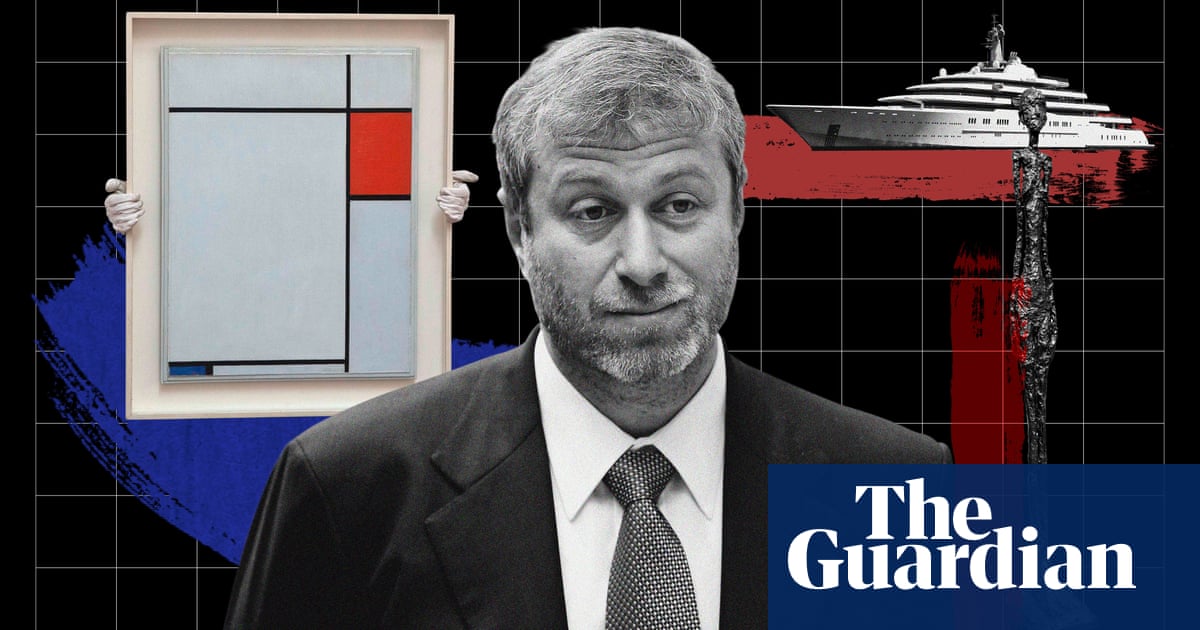
Indian paintings and drawings had been his lifelong passion and, before his death in 2017, the artist Sir Howard Hodgkin hoped that his collection would be acquired by the Ashmolean in Oxford – only for the museum to reject his offer amid concerns that some of the works should never have left India.
Now Britain’s loss could be America’s gain. Trustees of the Metropolitan Museum of Art in New York have discussed the possibility of acquiring works thought to be worth more than £7.2m. The collection contains more than 120 exquisite paintings and drawings dating from the 16th to the 19th centuries.
The Met’s interest was confirmed to the Observer by Hodgkin’s long-term partner Antony Peattie, who added: “Everything’s up in the air. Nothing’s settled.”
He recalled that the artist, who died at the age of 84, had wanted the collection to be kept together: “That was his dream.”
Hodgkin, who represented Britain in the Venice Biennale and won the Turner prize, created vibrant abstracts that radiated colour and light, inspired partly by his love of India. He once said: “It changed my way of thinking and, probably, the way I paint.” He visited India regularly and his major commissions included a mural for the British Council building in New Delhi.
He began collecting the country’s art as a schoolboy in the late 1940s, gradually refining his choices. In exhibiting his collection in 2012, the Ashmolean described it as “one of the finest in the world … formed by an artist’s eye”. Many of the images reflect his love of elephants, including depictions by Mughal artists. In a talk at the Ashmolean in 1992, Hodgkin said: “A great collection often seems to be the result of one very rich man going shopping. It isn’t. It is really partly illness, an incurable obsession … At its worst it’s greed, or the desire simply to possess, like a child at a party being given something to take home. But it’s much more than that at its highest.”
Hodgkin is thought to have offered a “bargain deal” to the Ashmolean. But a source recalled that everything was scuppered by concerns over the ownership history of some of the paintings. One funding body warned the museum privately that, without proof of certain works having left India entirely legally, it would not offer a grant towards the purchase and future grants could also be affected if the museum acquired it anyway.
Yet the source added: “The collection had been exhibited in northern Italy under the patronage of the president of India. That wouldn’t have taken place if Indians had been at all troubled about them having left India. But the funding body wouldn’t have it and that was the end of acquiring the collection.” The funding body denies that account.
Dr Alexander Sturgis, director of the Ashmolean, said: “It would have been wonderful if some of the works had come to us. But that was not to be. Andrew Topsfield, our curator, did work on the collection to identify the works with clear and secure provenance, which was about 40% of the collection. We had hoped that we would be able to acquire that part of the collection. But Howard wanted to keep the collection together and so, for that reason, we couldn’t pursue it.”
The problem lay in finding documented provenance, he said: “For museums, we need to have as secure evidence of provenance as possible.”
Peattie, who is a music writer, said: “The priorities when Howard was collecting in the 1970s, 1980s and 1990s were quality, not provenance. People didn’t even talk about provenance. Then it became of utmost importance, influenced by archaeology and sculpture which belongs in temples and has been ripped from its place.”
He said that Hodgkin had bought from international dealers, including those in London, New York and Hong Kong: “He didn’t know where the things came from before they reached those dealers. He didn’t think about it.
“I don’t know of any works that shouldn’t have left India. I’ve always tried to find out, but we haven’t managed to track anything down in the way of evidence.”
Asked whether Hodgkin was disappointed by the Ashmolean’s inability to acquire his collection, he said: “Howard accepted that it was force majeure. Nothing he could do.”
He recalled Hodgkin’s passion for India. “He loved working there. He took an apartment in Mumbai. The spare room was the studio.”
The Metropolitan declined to comment.
If questionable works are removed, the Ashmolean would still be interested, Sturgis confirmed: “It’s a remarkable collection of incredibly high-quality works and … a reflection of one of the country’s leading artists.”












